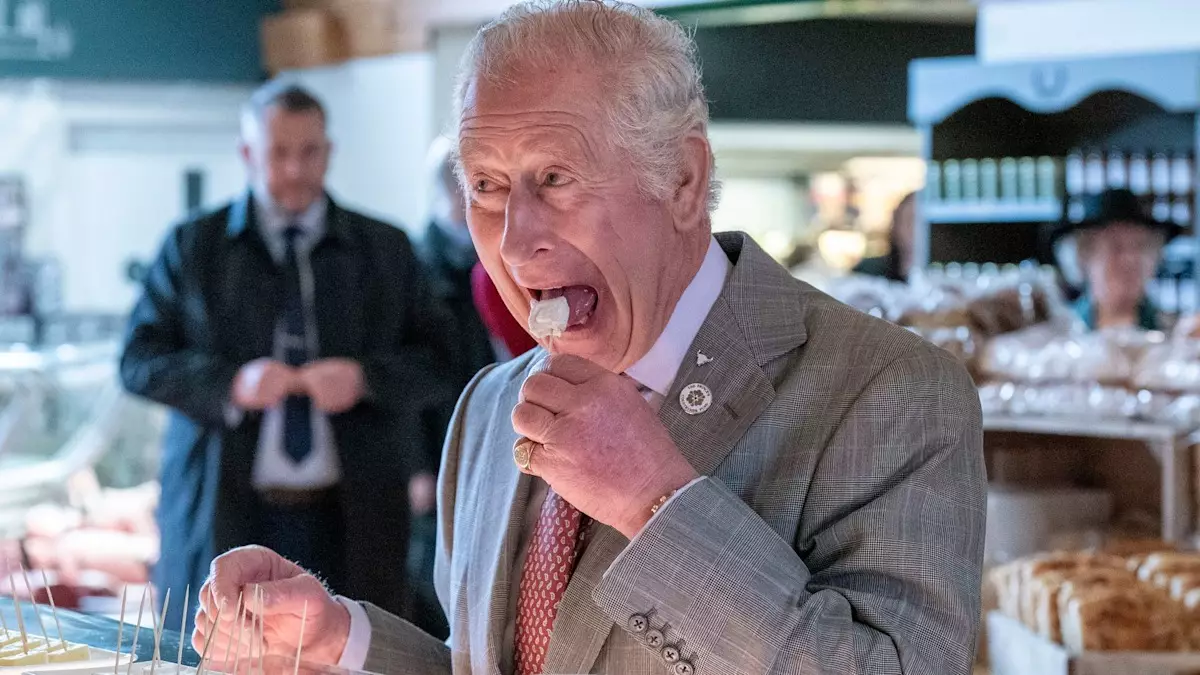Easter Sunday holds a revered spot in the royal calendar, deeply rooted in tradition and familial bonds. Historically celebrated first by Queen Victoria, who delighted her children with elaborate egg hunts, the occasion has evolved yet maintained its essence of togetherness and devotion. Today, the royal family honors this beautiful day by attending a solemn Easter service at St. George’s Chapel, located within the majestic grounds of Windsor Castle. This cherished tradition is more than merely a religious observance; it’s a strong reflection of faith, heritage, and the continuity of royal family values.
The significance of Easter in this context transcends mere ritual; it is a manifestation of the royal family’s commitment to both faith and familial harmony. While many see it as an opportunity for spiritual reflection, for the royals, it also offers a chance to nurture relationships over a feast that celebrates both culinary tradition and shared moments.
A Culinary Affair
At the heart of every royal Easter celebration lies an exquisite dining experience, one that brilliantly combines opulence and traditional fare. The royal family is known for preferring privacy at meals, yet insights from former royal chef Darren McGrady paint an appetizing picture of what the regal menu might entail. According to McGrady, roast lamb is the centerpiece of the Easter spread, symbolizing the ‘sacrificial lamb’ from Christian lore—an essential reminder of the deeper spiritual themes associated with the day.
The choice of lamb is not arbitrary; it connects the royal family to their Christian roots and celebrates the legacy of Jesus Christ as the Lamb of God. However, what makes this dining experience particularly intriguing is the royal custom of serving lamb to the late Queen Elizabeth II well-cooked, a testament to the personal preferences that define royal cuisine. The addition of a side salad reflects the royals’ inclination towards fresh and locally sourced ingredients, emphasizing a strong connection to their estate located in Windsor.
Following a hearty lamb feast, royals indulge in a second course featuring an array of cheeses, notably Windsor Cheese sourced from local dairies. This selection embodies the royal tradition of supporting local producers while also treating the family to the finest regional delicacies. To add a sweeter note, dessert typically includes Windsor peaches, which further showcase the estate’s agricultural richness.
Sweet Indulgences and Unique Preferences
Easter is not merely about the main course; it is a time for sweet indulgence and creativity. McGrady shares delightful anecdotes about traditional hot cross buns that chefs would prepare and send to the royals for their afternoon tea, a delightful continuation of the day’s culinary festivities. The prevalence of chocolate treats during Easter cannot be overlooked either—despite the difference in chocolate preferences among the royals. While the late Queen was famously a “chocoholic,” King Charles III has quite the opposite palate and is known for his lack of enthusiasm towards chocolate.
This intriguing difference adds a personal touch to the royal dining experience, highlighting how even a day steeped in tradition allows for individuality to shine through—a reflection of modernity that embraces both tradition and personal preference. Nevertheless, it is understood that even the King might be tempted by the allure of a sumptuous Easter lunch, especially given its extraordinary menu.
The Joy of Family Activities
Easter also extends beyond the dining table to fun and engaging family activities. The Wales family, including Prince William and Princess Kate, revel in organizing elaborate Easter egg hunts for their children. This tradition, filled with laughter and excitement, embodies the spirit of joy and unity that Easter symbolizes for the youngest royals. These hunts showcase a lighter, playful side of royal life, breaking the public’s perception of formality.
However, 2024 marked a deviation from this time-honored custom, as the Wales family forewent public Easter festivities due to Kate’s health concerns. This incident serves as a poignant reminder of the personal challenges faced by the royals, bringing an added layer of humanity to their public personas. Yet, as they look ahead, one can imagine the anticipation of resuming beloved traditions that not only connect them to their heritage but also create lasting memories for their children.
Easter within the royal family is not just about rich traditions or delicious meals; it is an intertwining of faith, familial bonds, and the joy that permeates their lives. As they gather around the table, the focus is not solely on the feast but also on nurturing connections, creating cherished memories, and passing down time-honored traditions.

